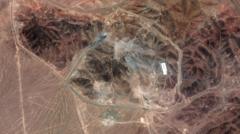The CIA's Director John Ratcliffe stated that recent U.S. military strikes have "severely damaged" Iran's nuclear facilities, suggesting that the operations have set back the country's nuclear program by years. This assertion comes amid a divergence from a leaked Pentagon intelligence report that indicated key aspects of Iran's nuclear infrastructure remained unaffected, leading to frustration within the Trump administration.
President Donald Trump expressed firm support for Ratcliffe's assessment, arguing via social media that the strikes had "obliterated" Iran's nuclear capabilities. He characterized the media coverage as misleading and declared that a news conference would be held to clarify the situation further, led by military officials. Speaking at a NATO summit in The Hague, Trump maintained that the damage inflicted was extreme and indicated that he would likely push for commitments from Iran to halt its nuclear endeavors in pending negotiations. However, Iran has not confirmed any such talks.
Ratcliffe revealed that multiple significant Iranian nuclear sites were destroyed and would require extensive time to reconstruct, based on intelligence sourced from a historically reliable informant. Meanwhile, Director of National Intelligence Tulsi Gabbard endorsed the CIA's findings, stating that reconstruction of the affected facilities would be a lengthy process.
The U.S. military's operation involved 125 aircraft targeting Iran’s three main nuclear facilities. However, satellite imagery indicates that while some physical damage was evident at sites like Fordo and Isfahan, it remains uncertain whether underground facilities were completely neutralized.
Controversies arose after a Pentagon report estimated only a minimal, few-month setback to Iran's nuclear program post-strike, which was delivered with low confidence and has been labeled an early assessment. As discussions around the effectiveness of the strikes continue, UN nuclear watchdog Rafael Grossi expressed concerns that Iran may have relocated critical uranium stockpiles prior to the attacks.
Iran's foreign ministry acknowledged that their nuclear installations suffered significant harm but did not elaborate on the extent of the damage. An Israeli Atomic Energy Commission report affirmed that crucial infrastructure at Fordo was destroyed, potentially pushing Iran’s timeline for developing nuclear weapons back by numerous years, contradicting statements from Iranian officials who claimed that no irreversible damage occurred.
The ongoing conflict unfolds against the backdrop of a tenuous ceasefire negotiated by Trump earlier in the week. As diplomatic communications between the U.S. and Iran remain uncertain, both sides are preparing to navigate the complex implications of this military engagement and its impact on regional security dynamics.
President Donald Trump expressed firm support for Ratcliffe's assessment, arguing via social media that the strikes had "obliterated" Iran's nuclear capabilities. He characterized the media coverage as misleading and declared that a news conference would be held to clarify the situation further, led by military officials. Speaking at a NATO summit in The Hague, Trump maintained that the damage inflicted was extreme and indicated that he would likely push for commitments from Iran to halt its nuclear endeavors in pending negotiations. However, Iran has not confirmed any such talks.
Ratcliffe revealed that multiple significant Iranian nuclear sites were destroyed and would require extensive time to reconstruct, based on intelligence sourced from a historically reliable informant. Meanwhile, Director of National Intelligence Tulsi Gabbard endorsed the CIA's findings, stating that reconstruction of the affected facilities would be a lengthy process.
The U.S. military's operation involved 125 aircraft targeting Iran’s three main nuclear facilities. However, satellite imagery indicates that while some physical damage was evident at sites like Fordo and Isfahan, it remains uncertain whether underground facilities were completely neutralized.
Controversies arose after a Pentagon report estimated only a minimal, few-month setback to Iran's nuclear program post-strike, which was delivered with low confidence and has been labeled an early assessment. As discussions around the effectiveness of the strikes continue, UN nuclear watchdog Rafael Grossi expressed concerns that Iran may have relocated critical uranium stockpiles prior to the attacks.
Iran's foreign ministry acknowledged that their nuclear installations suffered significant harm but did not elaborate on the extent of the damage. An Israeli Atomic Energy Commission report affirmed that crucial infrastructure at Fordo was destroyed, potentially pushing Iran’s timeline for developing nuclear weapons back by numerous years, contradicting statements from Iranian officials who claimed that no irreversible damage occurred.
The ongoing conflict unfolds against the backdrop of a tenuous ceasefire negotiated by Trump earlier in the week. As diplomatic communications between the U.S. and Iran remain uncertain, both sides are preparing to navigate the complex implications of this military engagement and its impact on regional security dynamics.




















